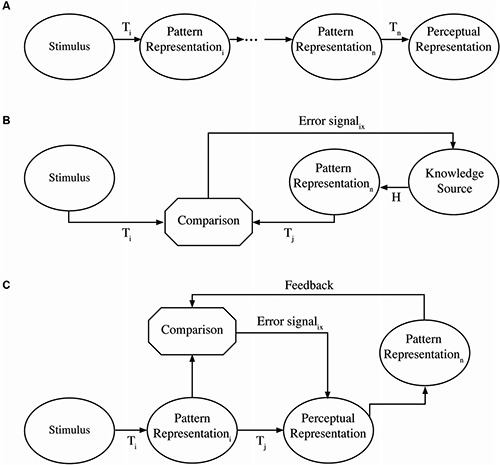Figure 1.

Schematic representation of passive and active processes. The top panel (A) represents a passive process. A stimulus presented to sensory receptors is transformed through a series of processes (Ti) into a sequence of pattern representations until a final perceptual representation is the result. This could be thought of as a pattern of hair cell stimulation being transformed up to a phonological representation in cortex. The middle panel (B) represents a top-down active process. Sensory stimulation is compared as a pattern to hypothesized patterns derived from some knowledge source either derived from context or expectations. Error signals from the comparison interact with the hypothesized patterns until constrained to a single interpretation. The generation of hypothesized patterns may be in parallel or accomplished sequentially. The bottom panel (C) represents a bottom-up active process in which sensory stimulation is transformed into an initial pattern, which can be transformed into some representation. If this representation is sensitive to the unfolding of context or immediate perceptual experience, it could generate a pattern from the immediate input and context that is different than the initial pattern. Feedback from the context-based pattern in comparison with the initial pattern can generate an error signal to the representation changing how context is integrated to produce a new pattern for comparison purposes.
